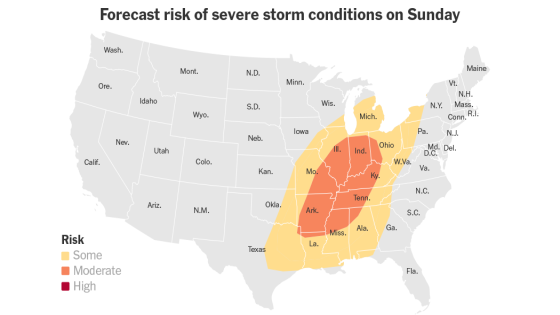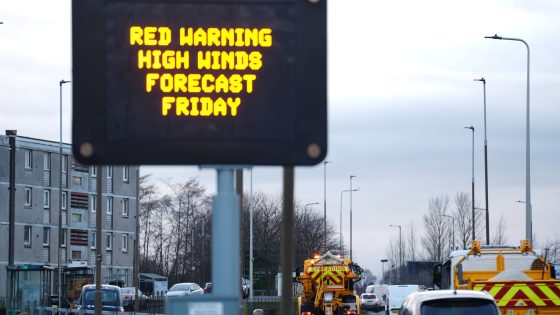A severe weather outbreak is developing across the central and eastern united states, with thunderstorms, hail, and potential tornadoes expected this weekend. The situation is particularly concerning for regions from Texas to Michigan on Sunday, where forecasters have warned of very large hail and damaging winds.
- Severe weather outbreak across central and eastern US.
- Thunderstorms and tornadoes expected this weekend.
- High risk zones include Ohio and Tennessee Valleys.
- Excessive rainfall possible in some regions.
- Weather threat shifts east on Monday.
- Another storm system may follow soon.
The upcoming severe weather is driven by a cold front associated with a storm system moving through the Great Lakes. This front will interact with warm, moisture-rich air from the South, creating conditions conducive to powerful thunderstorms. Meteorologist Marc Chenard noted that sufficient moisture and instability are present for potentially severe storms.
Severe weather could begin as early as Saturday night in parts of the Midwest, especially in northeastern Oklahoma through eastern Kansas and western Missouri. However, forecasters expect a more widespread threat on Sunday and Monday. Areas under an enhanced risk level (three out of five) include northern Louisiana, Arkansas, northern Mississippi, northwest Alabama, western Tennessee, southeast Missouri along with much of Kentucky, Illinois, Indiana, and eastern Ohio.
- Severe hazards possible: large hail
- Tornadoes
- Damaging wind gusts
The primary threats are expected to materialize during the afternoon on Sunday as storms move from eastern Texas into parts of the Mississippi Valley. As evening approaches on Sunday night, these threats will extend into the Tennessee Valley and Gulf Coast states. While thunderstorms pose significant risks for hail and tornadoes in many regions, excessive rainfall may also occur across areas including Louisiana to Ohio.
This severe weather event highlights an active period for meteorological activity across much of the U.S., with another system likely following closely behind after Monday’s storm moves offshore.

































